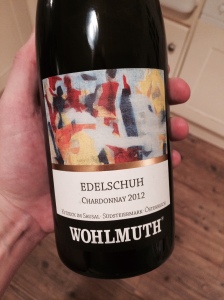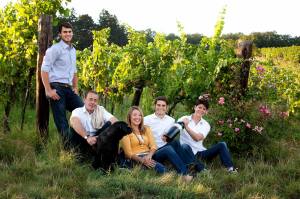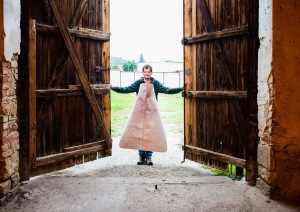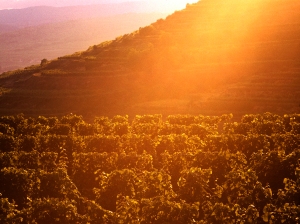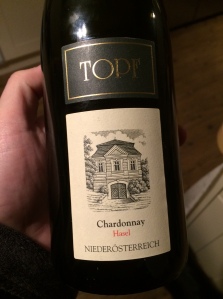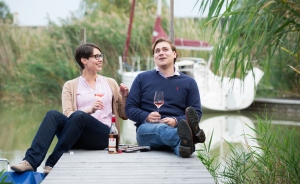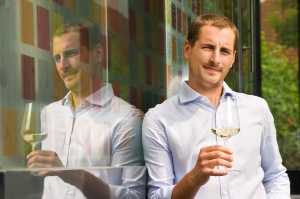
Schrattenthal may be the smallest wine town in Austria, with only 850 inhabitants, but it’s a place that proves size really isn’t everything. This quiet corner of the Weinviertel region is home to Phillip Zull and his family’s impressive wine-making business. Based in their elegant home (renovated with panache in 2007), Phillip’s family, their trusty Weimaraner and a team of occasional workers toil for 18,000 hours a year, on just over 18 hectares of vines, to produce 120,000 bottles of white, red and sweet. These may be comparatively modest figures, but quality is clearly guaranteed, echoed by Phillip’s appealingly quiet confidence in his work. He produces wonderfully elegant wines, speaking of a sharp disinterest in fads, but an absolute love of this unique, dry terroir, close to the Czech border.
His easy-drinking wines are called ‘Lust und Laune’ (Mood and Fancy). There’s a light and green, herby Grüner Veltliner which has already been harvested and bottled for 2014. The 2013 rosé, made predominantly of Zweigelt is, like the white, light and clean, with a gentle hint of red tannic structures, while the 2013 red itself, made from Blauer Portugieser and Zweigelt, has subtle tobacco and concord grape notes, which, combined with a little bit of oak, make for a smooth wine with muted tannins.
The Schrattenthal classic Grüner shows more complexity. Here, harvested a touch later, from three different vineyards, the green zest of an earlier harvest turns to more pear-like flavours. Some of the fruit is a little too muted for my taste in the spicy 2013 Zweigelt, aged in used barrels for 8 months. But I absolutely adored the 2013 Chardonnay, drawn from 1983 vines in one of the cooler spots in Phillip’s vineyards. These grapes are picked late and undergo malolactic fermentation, making for a gloriously buttery Chardonnay.
Richer too is the Grüner Veltliner Äußere Bergen. These vines are something of an experiment, in which cuttings were taken from seven old Veltliners from other esteemed sites and then propagated on this east-facing plateau to the west of Schrattenthal (where they are sheltered from cold winds by the warming Waldviertel). The variety of original sources offers welcome complexity here, with spice and riper fruits, accentuated by the 50% of the wine that is kept in barrels before bottling. But perhaps the most charming of Phillip’s whites is his Riesling Innere Bergen 2013, from a south-facing slope near the Äußere Bergen, offering fresh, chalky minerality, followed by an amazing bloom of honey and apricots. Tasting the 2006 Beerenauslese Riesling, those flavours were even racier, turning towards mango when a little more oxidised.
Although the reds from this area are cooler in nature, I was delighted to find loads of jammy fruit in the signature Schrattenthal 9 cuvée of Zweigelt, Merlot and Cabernet Sauvignon (on a 70/20/10 split). This red, named after the winery’s address, is made from grapes grown closer to home, while the Pinot Noir 2011 is, like its white Burgundy counterpart (the Chardonnay), picked later from one of the cooler corners of Phillip’s land, with subtle fruit and long notes of tobacco and spice.
With wines of this quality – Austrian magazine Falstaff has given Weingut Zull a much sought-after ✭✭✭✭ rating – you wonder why Phillip is not more ambitious. How, for instance, are his wines not currently imported into the UK? There’s certainly space for him to grow and for others to learn about his wines. But, ‘as a human being’, he says, you may want ‘to catch and collect, but you have to be happy with your status’. For Zull, running this superb but unpresuming winery, that means being ‘out in the vineyard and in the cellar, rather than in a dress coat, flying from A to B’. Tasting his thoroughly sophisticated range, I think he’s got that balance just right. To read more about Weingut Zull and to place an order click here.
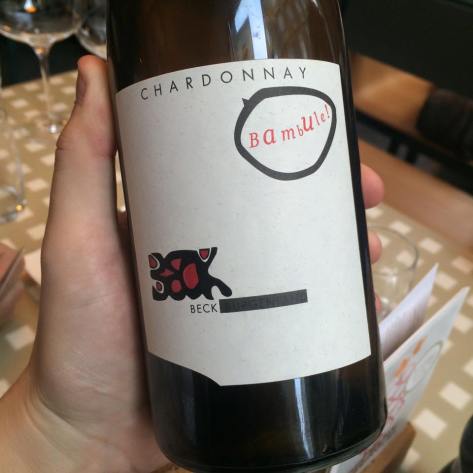 I’m a BIG fan of natural, orange, whatever you want to call them, wines. They’re playful, they match and enhance potent flavours in food and they offer some of the best practical insights into the winemaking process that you can drink. As I’ve written before, Lugeck in Vienna, swift becoming one of my favourite places in the city, has an unrivalled list of natural wines. That’s where I first drank Matthias Warnung’s superb natural Grüner Veltliner, Michael Wenzel‘s Furmint and lots of other joys besides.
I’m a BIG fan of natural, orange, whatever you want to call them, wines. They’re playful, they match and enhance potent flavours in food and they offer some of the best practical insights into the winemaking process that you can drink. As I’ve written before, Lugeck in Vienna, swift becoming one of my favourite places in the city, has an unrivalled list of natural wines. That’s where I first drank Matthias Warnung’s superb natural Grüner Veltliner, Michael Wenzel‘s Furmint and lots of other joys besides.
